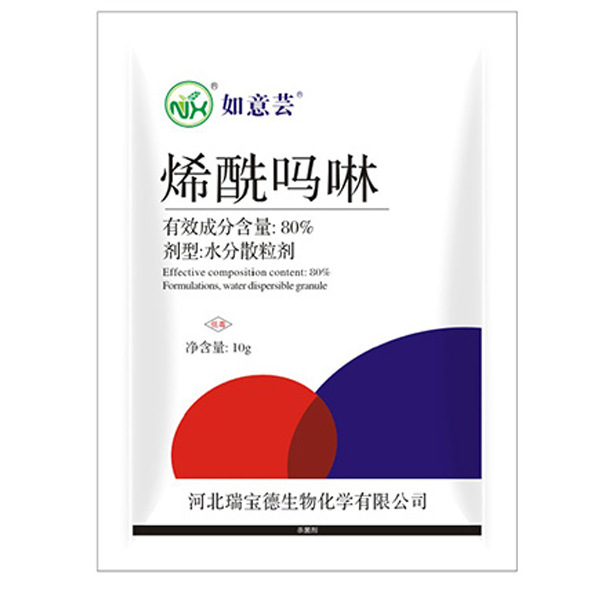Dimethomorph Fungicide Mechanism of Action
Dimethomorph Fungicide has preventive and therapeutic activity, has residual activity on crop leaves, and provides excellent preventive effects. When
Dimethomorph Fungicide is sprayed on crops, the agent can penetrate into the leaf tissue through the surface of the leaves, spread through the leaves, and conduct locally in the leaves, which can be used to prevent diseases of various important crops. These include cucumber downy mildew, grape downy mildew, potato late blight, tomato late blight, tobacco black shank and so on. Dimethomorph Fungicide has no cross-resistance with the most widely used phenyl amide fungicides (such as metalaxyl), has good affinity, and can be mixed with other different types of fungicides, such as mancozeb, in order to expand sterilization. Spectrum and scope of use.

Most morpholine fungicides are used to control powdery mildew, and the bactericidal action of Dimethomorph Fungicide is to destroy the cell wall by directly destroying the formation of fungal cells, which leads to the death of fungal cells and does not have the effect of controlling powdery mildew. Although
Dimethomorph Fungicide contains a morpholine ring group, it does not function as a morpholine ring-reactive group, but actually belongs to acrylamide fungicides. Its mechanism of action and characteristics are that it inhibits the formation of oomycete cell walls and has a systemic property. It is commonly used to control potatoes, grapes, gourd downy mildew, blight, and is also used in tomato and other crop diseases. Without considering the resistance of pathogenic fungi, the use of
Dimethomorph Fungicide and the currently widely used metalaxyl, cymoxanil, oxazolium, triethylphosphonate and other agents, the efficacy is still higher.

